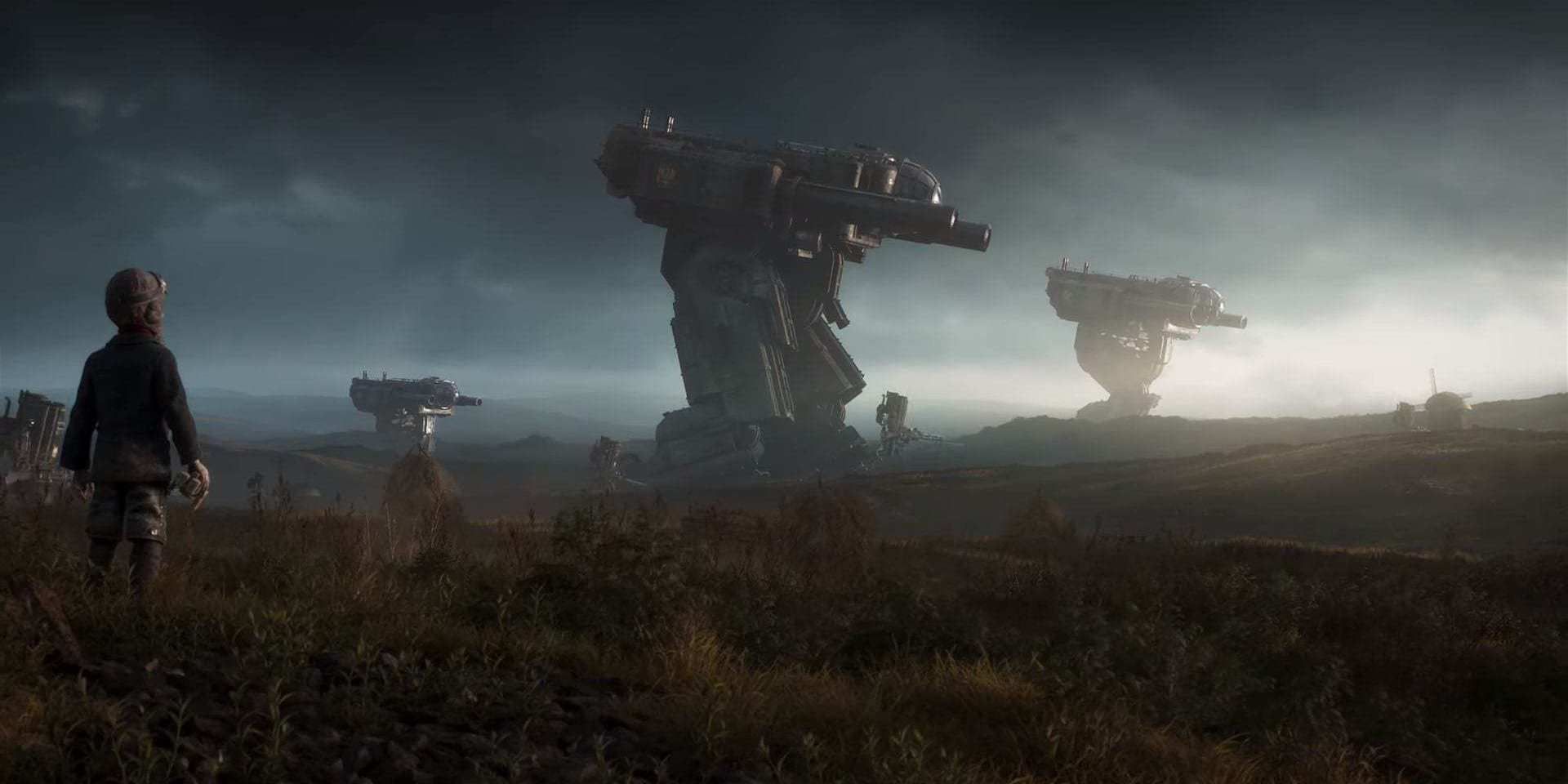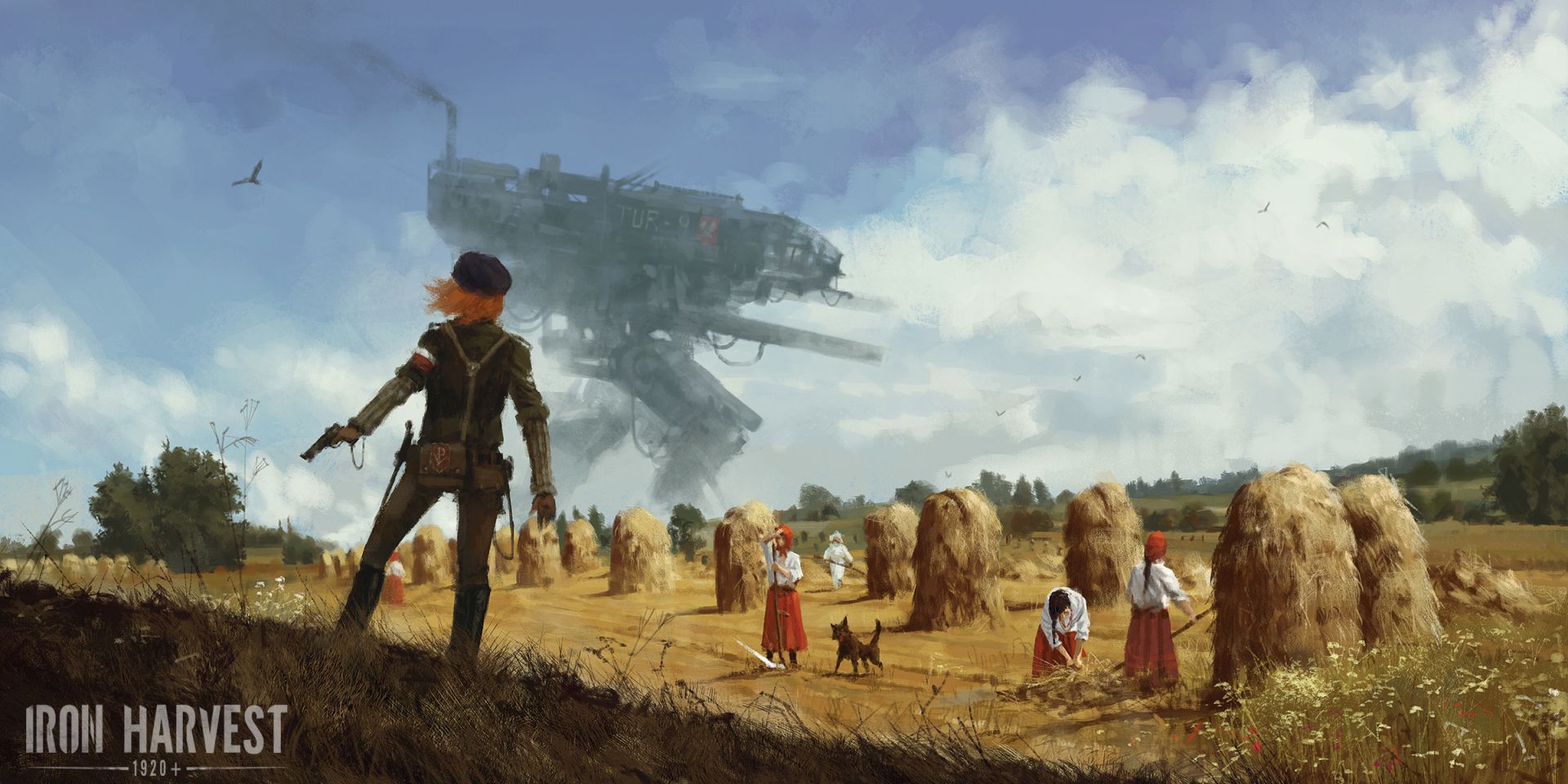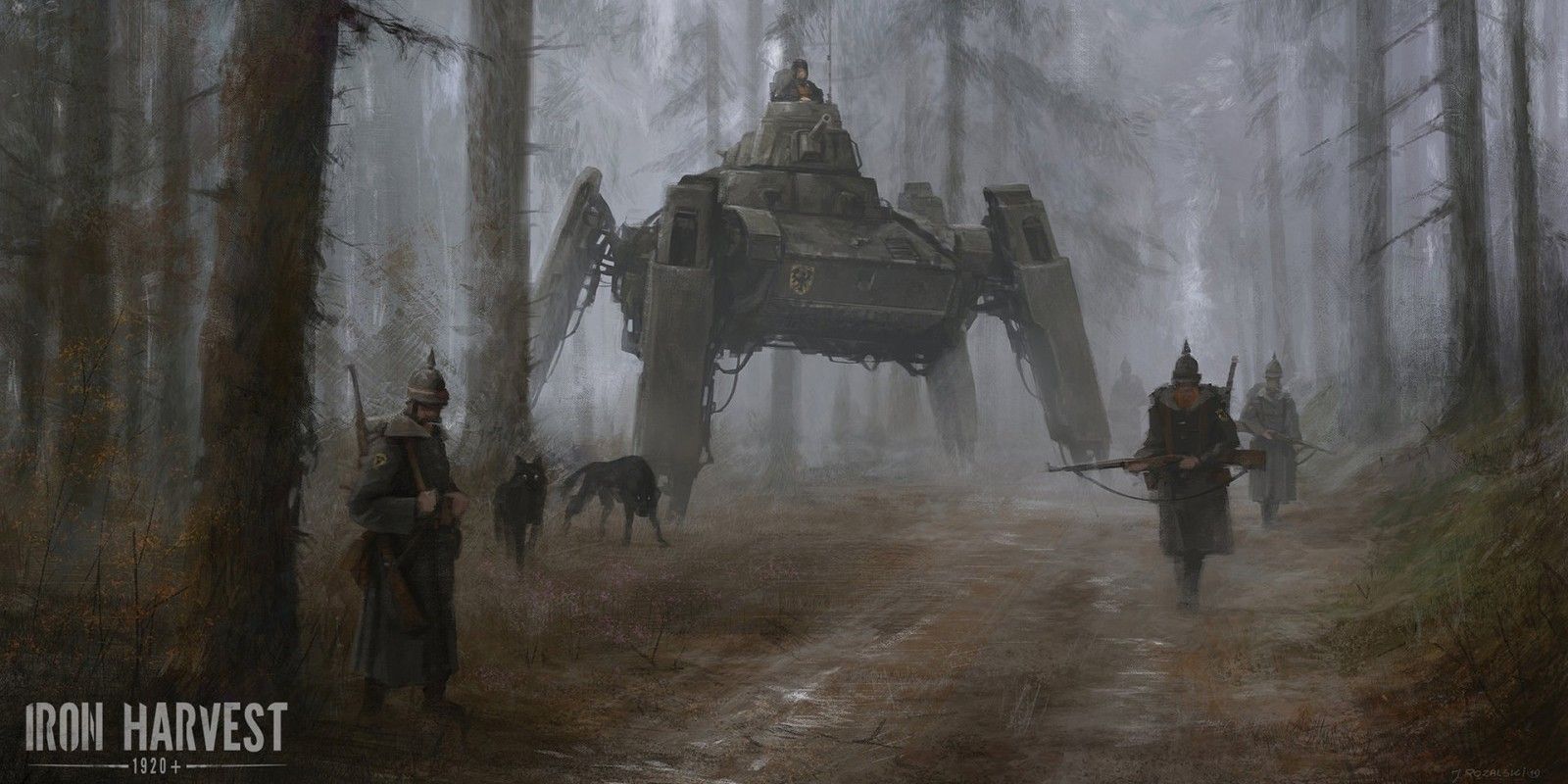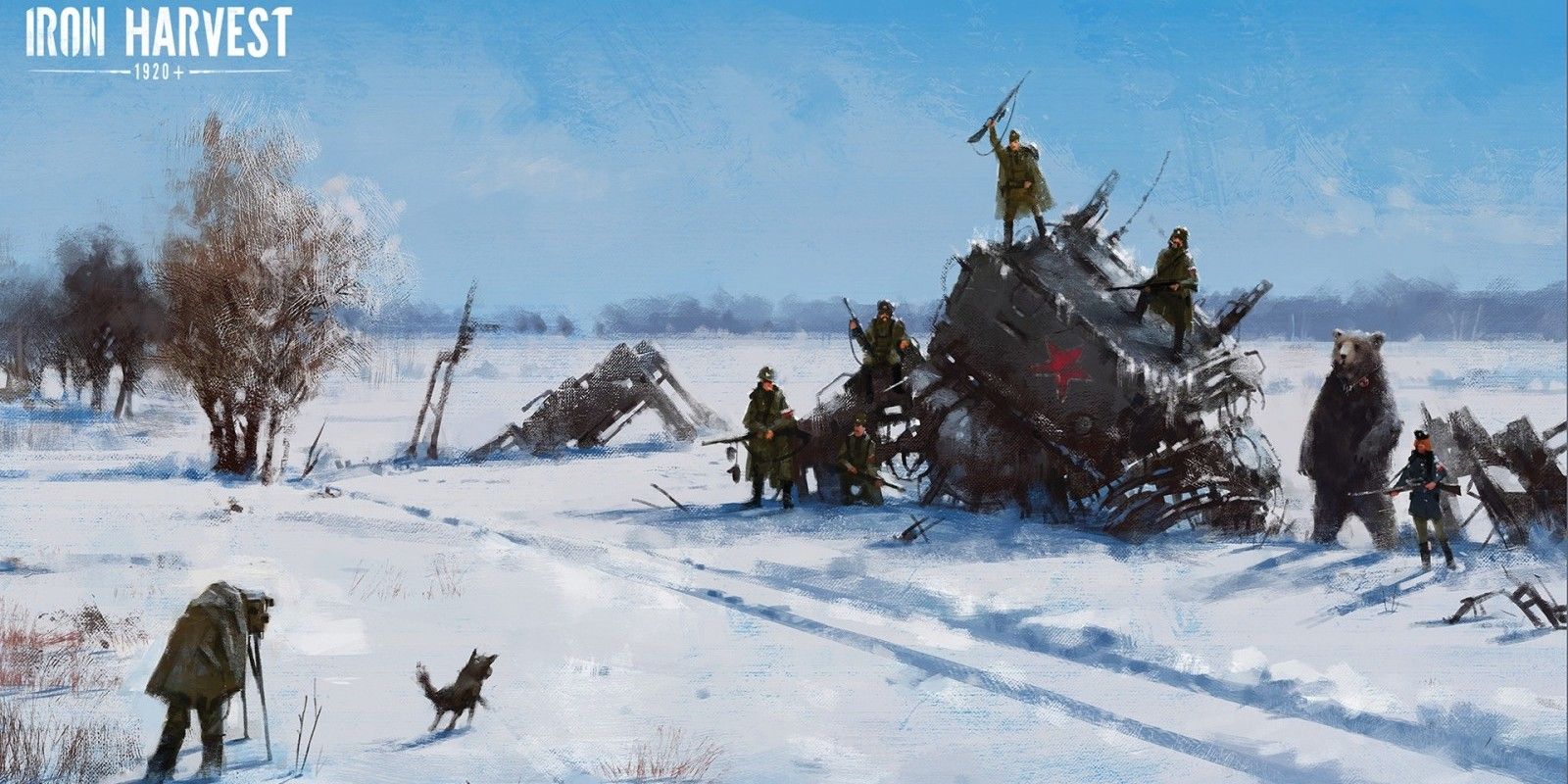The latest trailers for the upcoming real-time strategy game Iron Harvest assaults players with brutal imagery of a World War I that could have been, where soldiers from warring nations rampage through forests and fields of grain with diesel-powered mechs. Fittingly, the three main factions in this RTS correspond to early 20th century European nation-states which existed during and came into being after "the War to End All Wars."
The strange, surreal setting of Iron Harvest, "The World of 1920+," was first dreamed up by the mind of Polish visual artist Jakub Rozalski, who painted a series of landscapes with a common motifs: farmers and children in rustic garb going about their day to day lives while tall, anachronistic robots march past in the background. This novelty of these landscapes lie in how they contrast the mundane beauty of rural life with the uncanny intrusion of advanced technology. A similar motif can be seen in the "Tales From the Loop" paintings by Swedish artist Simon Stålenhag, which wound up inspiring a tabletop roleplaying game and a TV series.
Rozalski's "The World of 1920+" setting was adapted into a tabletop strategy board game called Scythe, in which players take control of nation-state factions in the continent of Europa, each armed with robotic war machines produced by the mysterious city-state known only as "The Factory". The goal of players in this game is to build up their faction's economy, capture new territory to expand their nations, and uncover the mysteries of their world by drawing "Encounter Cards" and resolving the scenarios described within. Unsurprisingly, the Iron Harvest RTS borrows many elements from Scythe, including the designs of mechs and other army units, the visual stylings of the nation-state factions, and the "Hero Units" of these factions, each of whom has a trusty animal companion.
Iron Harvest Faction #1: The Polonian Republic
The Polonian Republic, arguably the "protagonist faction" of Iron Harvest, corresponds to the the Second Polish Republic that formed in the aftermath of World War 1. Polonia's frontline mechs have the general shape of drum-cans with legs, and their national hero, "Anna," is a red-headed sniper who fights alongside Wojtek, her ursine comrade in arms. As with real-life Poland, the newly founded Polonian Republic is fighting to maintain its independence against the Saxons and the Rusviets, two rival nation-states and former occupiers of their homeland.
Iron Harvest Faction #2: the Saxon Empire
The Saxon Empire faction of Iron Harvest has castle-shaped, heavily-armored mechs that frequently walk around on four legs, while many of their infantry bear Iron Cross icons and wear spiked Pickelhaube helmets. In case it wasn't obvious, this game faction is a blatant stand-in for the German Empire, albeit one founded by aristocrats from Saxony rather than Prussia. The national hero of Saxony, Gunter von Duisburg, personally reared his two dire-wolf companions, Nacht and Tag, to be (preemptive) defenders of his country.
Iron Harvest Faction #3: The Rusviet Union
The Rusviet Union, naturally, corresponds to the historical Soviet Union, with a dash of aesthetic from the Tsar-ruled Russian Empire. The Rusviet's frontline mechs invariably have backwards-canted legs, which may be a shout-out to the Russian legend of Baba Yaga and her chicken-legged hut, while the national hero of Rusviet, the submachine gun-toting Olga Romanova, has a Siberian Tiger companion named Changa. The rivalry between Polonia and Rusviet in Iron Harvest is modeled after the real-life Polish-Soviet War of 1919 to 1921, in which the fledgling Soviet Union tried to conquer the newly formed Polish state.
More than Diesel-punk imagery, one could say that main theme of Iron Harvest is nationalism – specifically, how a nation with one language, culture and creed is as artificial in concept as giant walking war robots or mechanical animals. The soldiers and mechs who tear apart the farming village in the latest trailer for Iron Harvest embody the destructively industrial nature of nationalism, which too often enforces unity at the cost trampling over the small, humble, peaceful people of the world.




